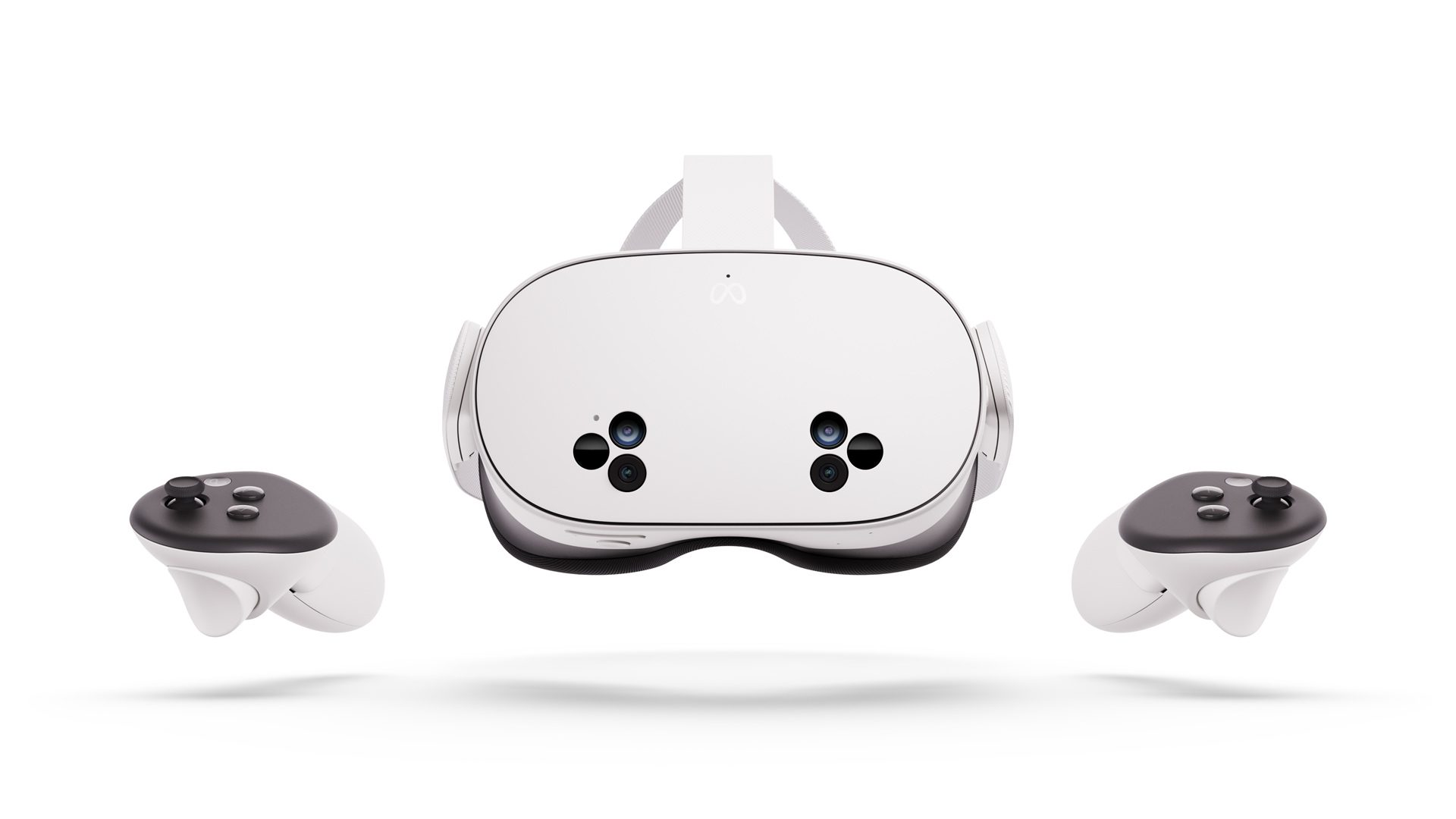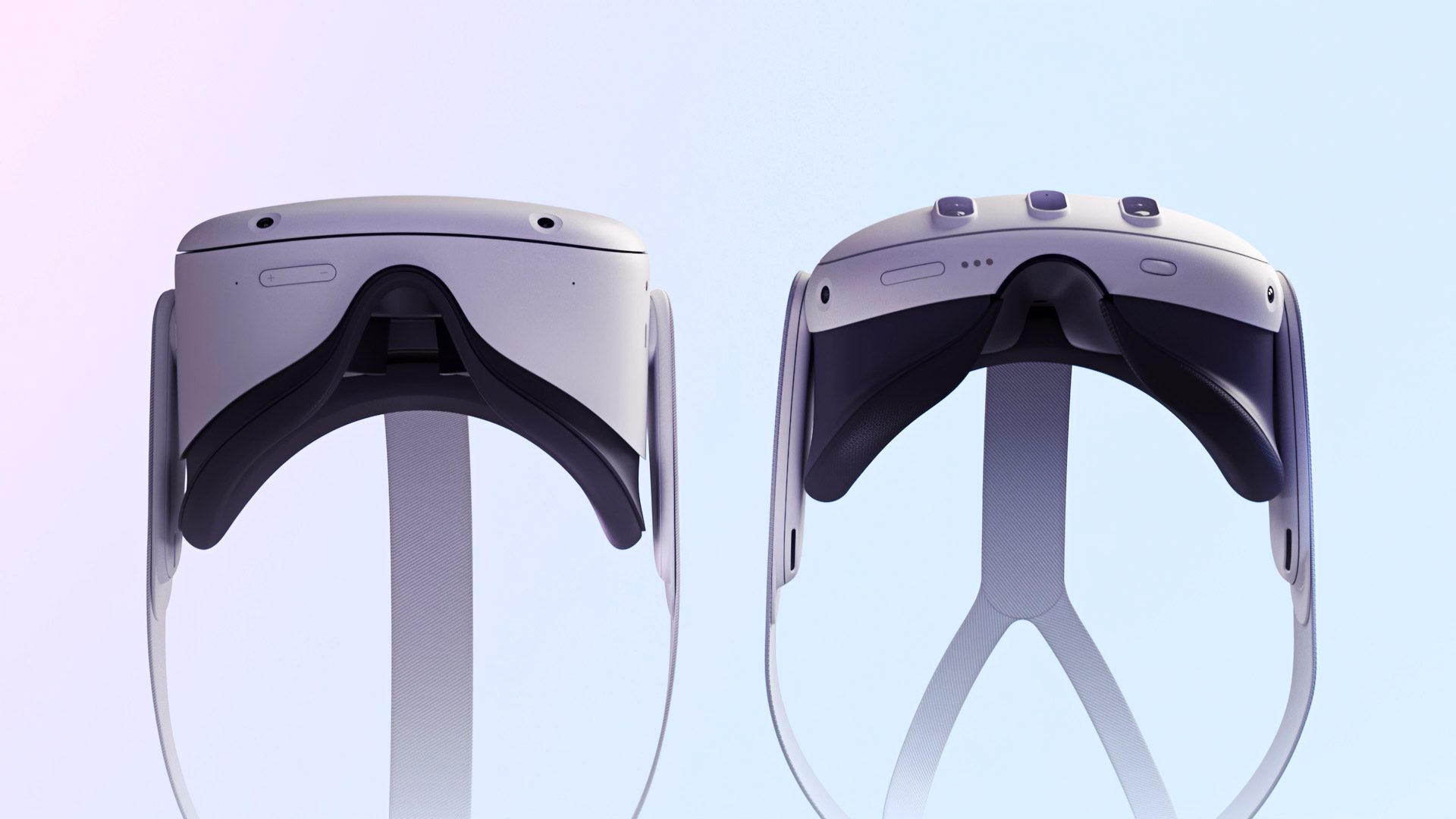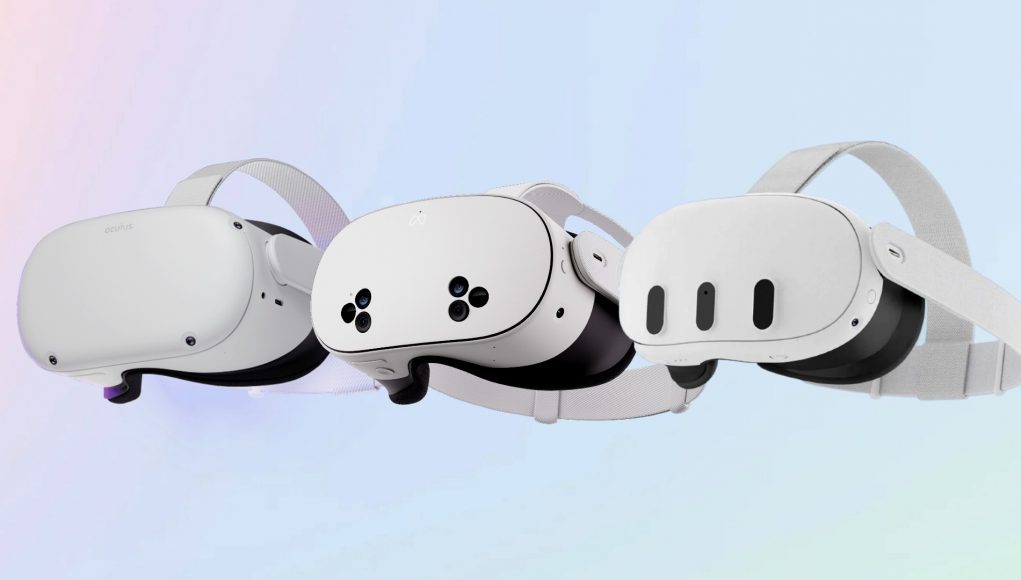After a torrent of leaks, Meta has finally unveiled Quest 3S at Connect today, detailing every reason why it thinks Quest and Quest 2 owners ought to upgrade to the company’s latest and now most affordable mixed reality headset. Here’s the breakdown of Quest 2 vs Quest 3S vs Quest 3:
In terms of specs, Quest 3S is straddling somewhere between the 2020-era Quest 2 and 2023-era Quest 3, notably ditching the monochrome passthrough and last-gen Qualcomm Snapdragon XR2 chipset for full-color sensors and the same Snapdragon XR2 Gen 2 as Quest 3. You can read our full hands-on with Quest 3S here.
To start, let’s see the basic specs side-by-side:
| Quest 2 | Quest 3S | Quest 3 | |
Visuals |
|||
| Display | 1 × LCD | 1 × LCD | 2 × LCD |
| Resolution (per-eye) | 1,832 × 1,920 (3.5MP) | 1,832 × 1,920 (3.5MP) | 2,064 × 2,208 (4.5MP) |
| Pixels Per-degree | 20 PPD | 20 PPD | 25 PPD |
| Maximum Refresh Rate | 120Hz | 120Hz | 120Hz |
| Optics | Fresnel | Fresnel | Pancake |
| Field-of-view | 96ºH × 90ºV | 96ºH × 90ºV | 110ºH × 96ºV |
| Pass-through view | Black & white (4 PPD) | Color (18 PPD) | Color (18 PPD) |
| Optical Adjustments | Stepped IPD eye-relief (via included spacer) |
Stepped IPD eye-relief (via included spacer) |
Continuous IPD, stepped eye-relief (built-in) |
| IPD Adjustment Range | 58mm, 63mm, 68mm | 58mm, 63mm, 68mm | 53–75mm |
Performance & IO |
|||
| Processor | Snapdragon XR2 Gen 1 | Snapdragon XR2 Gen 2 | Snapdragon XR2 Gen 2 |
| RAM | 6GB | 8GB | 8GB |
| Storage | 128GB, 256GB | 128GB, 256GB | 512GB (128GB previously available) |
| Connectivity | Wi-Fi 6, Bluetooth | unknown (likely Wi-Fi 6E, Bluetooth) | Wi-Fi 6E, Bluetooth |
| Connectors | USB-C | USB-C | USB-C contact pads for optional dock |
| Input | Touch v3 (AA battery 1×) hand-tracking, voice |
Touch Plus (AA battery 1×) hand-tracking, voice |
Touch Plus (AA battery 1×) hand-tracking, voice |
| Audio | In-headstrap speakers 3.5mm aux output |
In-headstrap speakers | In-headstrap speakers 3.5mm aux output |
| Microphone | Yes | Yes | Yes |
| Battery | 1.5–2.5 hours (3,640 mAh) | 2.5 hours (4,324 mAh) | 2.2 hours (5,060 mAh) |
| Weight | 503 grams | 514 grams | 515 grams |
Sensing |
|||
| Headset-tracking | Inside-out (no external beacons) | Inside-out (no external beacons) | Inside-out (no external beacons) |
| Controller-tracking | Headset-tracked (headset line-of-sight needed) |
Headset-tracked (headset line-of-sight needed) |
Headset-tracked (headset line-of-sight needed) |
| Eye-tracking | No | No | No |
| Expression-tracking | No | No | No |
| On-board cameras | 4 × IR | 2 × RGB, 4 × IR 2 × IR flood LED |
2 × RGB, 4 × IR |
| Depth-sensor | No | No | Yes |
Price |
|||
| MSRP | $300 (128GB), $350 (256GB) | $300 (128GB), $400 (256GB) | $500 (512GB) |
As you’d imagine, Quest 3S running the same chipset and offering the same color passthrough as Quest 3 will give users access not only to the back catalogue of Quest titles, but also mixed reality games and exclusives designed for Quest 3 moving forward.

To hit that magical $300 price point (128GB model) though, it’s relying on older Fresnel lenses as well as a the same resolution displays as Quest 2. At least in terms of resolution, the gulf between Quest 2 and Quest 3 isn’t that wide, so it’s a pretty understandable holdover.
That means we’re again seeing some flavor of 1,832 × 1,920 (20ppd) LCD display with a 96-degree horizonal field of view (FOV), as seen on sheet below. By comparison, Quest 3 boasts dual 2,064 × 2,208 (4.5MP) LCD displays, a newer pancake lens design and 110-degree horizontal FOV.

With facial interfaces removed, Meta is trumpeting Quest 3S as “20 percent slimmer” than Quest 2, where as the claim for Quest 3 is 30 percent slimmer, owing to its inclusion of pancake lenses.
Strangely enough, Quest 3S is launching with the same storage options as Quest 2: 128GB and 256GB—something deemed too small for Quest 3 proper, which is discontinuing its 128GB version, leaving only the 512GB to choose from. Yeah, pricing as and availability for older models has changed a bit. Check out our full explainer on what’s staying and what’s going to learn more.







